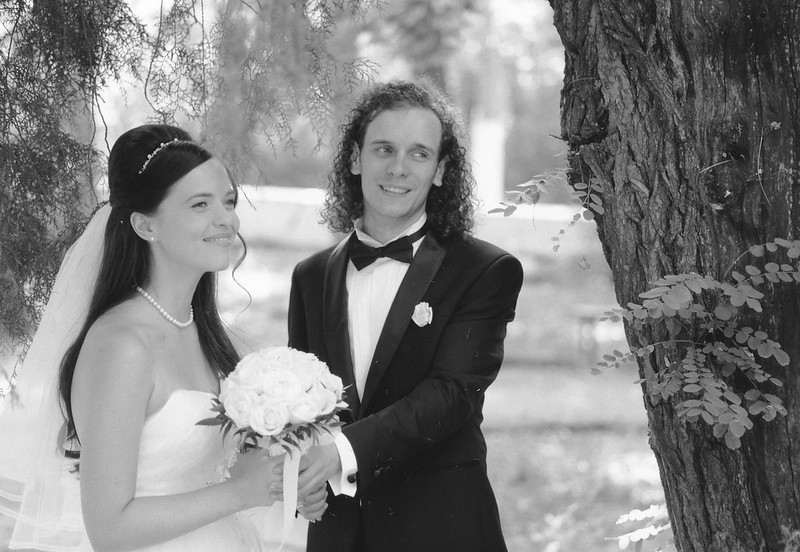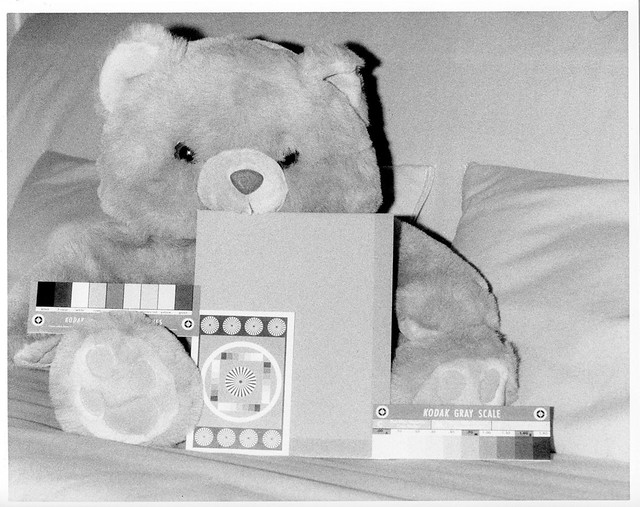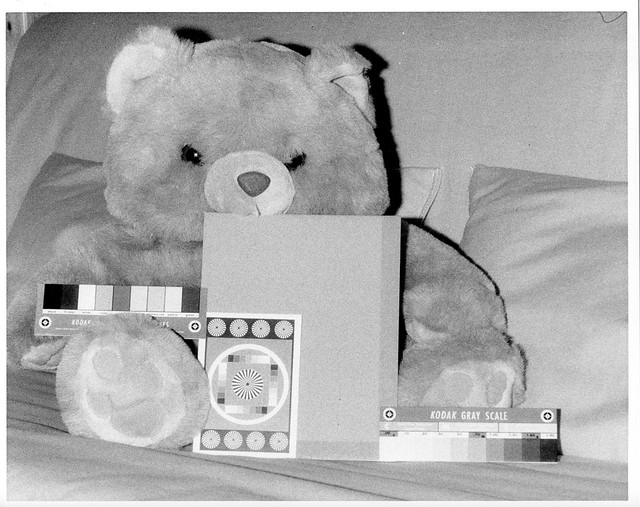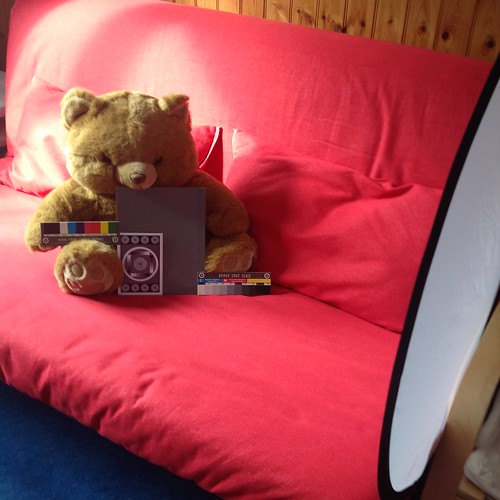Fotohuis
Well-known
Well, I will show you some pictures shooting with J-9 85mm and Summarit 75mm.
In FSU camera it will be this combination:

And for the Leica glass:

Unfortunately my Heiland Split Grade is at the moment in Germany for upgrade and repair. But I hope at the end of next week it will be back.
Maybe in combination with the new Foma Retropan 320 soft which I have tested already with some interesting developer combinations.
In FSU camera it will be this combination:

And for the Leica glass:

Unfortunately my Heiland Split Grade is at the moment in Germany for upgrade and repair. But I hope at the end of next week it will be back.
Maybe in combination with the new Foma Retropan 320 soft which I have tested already with some interesting developer combinations.
bobby_novatron
Photon Collector
Please post your results, I think there are many people here who would like to see the comparison. 
Fotohuis
Well-known
Unfortunately my Heiland Split Grade is at the moment in Germany for upgrade and repair.
Put on the Post last Wednesday to Wetzlar, Germany. Just received back today on Wednesday. A problem in the power supply of the unit. Repaired and a last upgrade of the Split Grade software. What a great service from Heiland Electronic GmbH.
Back in the darkroom!
Fotohuis
Well-known
A first result:
Zorki-6 + J-9 used on F=2,8
APX-100 (new) in Microphen 1+1.

Zorki-6 + J-9 used on F=2,8
APX-100 (new) in Microphen 1+1.

Fotohuis
Well-known
The first "failures" too. The parallax with this lens is pretty big so if you come to a short distance the universal VF has to be corrected.
Fotohuis
Well-known

Indeed: Sometimes the Netherlands, sometimes Ukraine ....... :angel:
Summarit F/2,5-75mm on another iso 100 film. (Acros 100 in R09 1+50). Even in R09/Rodinal this film has finer grain then above APX-100 (new) / Kentmere 100 film.
I will continue the test with the new Foma Retropan 320 Soft film on E.I. 160-320 because I can bulk load it with short test ends.
Fotohuis
Well-known
Test chart with the Jupiter-9. The question is: Testing the lens or testing my scanner?


bobby_novatron
Photon Collector
Thank you for posting and sharing your results. The wedding photo with the Summarit-75 is wonderful.
DNG
Film Friendly
Could you do a J9 on Acros 100 in R09 1:50
I have a 1953 J9 that draws real nice..
I agree with the Kentmere 100, it is grainy for a 100, even in HC110 1:60.(What I use). it Is more like old Tri-X...
But, it does have great shadow depth in tonal range.
On the J9 scan.... did you scan at default settings(usually never right)? Or, adjust at least the histogram to be a full scale from shadow > highlight (240-10)
the resolution shouldn't affect the tonal range if you used at least 2000dpi and scanned 16bit gray scale.
I don't scan 35mm below 2000dpi...
I have a 1953 J9 that draws real nice..
I agree with the Kentmere 100, it is grainy for a 100, even in HC110 1:60.(What I use). it Is more like old Tri-X...
But, it does have great shadow depth in tonal range.
On the J9 scan.... did you scan at default settings(usually never right)? Or, adjust at least the histogram to be a full scale from shadow > highlight (240-10)
the resolution shouldn't affect the tonal range if you used at least 2000dpi and scanned 16bit gray scale.
I don't scan 35mm below 2000dpi...
Fotohuis
Well-known
The scans are from a Split Grade made, optical print (enlarger). I do not think any flatbed scanner can do a real representative 35mm film scan.
Fotohuis
Well-known
The set up:
On the left: Zorki-6 with Jupiter-9 (F/2,0-85mm), on the right Leica M7 with Summarit F/2,5-75mm. Test film: Foma Retropan 320 Soft 135-12 E.I. 320.
Flash with my Metz 45 CL-3 but that PC contact is terrible on cameras from the 60's. The Metz you can put on A-TTL up from F/2,8 - F/16.

On the left: Zorki-6 with Jupiter-9 (F/2,0-85mm), on the right Leica M7 with Summarit F/2,5-75mm. Test film: Foma Retropan 320 Soft 135-12 E.I. 320.
Flash with my Metz 45 CL-3 but that PC contact is terrible on cameras from the 60's. The Metz you can put on A-TTL up from F/2,8 - F/16.

Fotohuis
Well-known
Camera's on a tripod with cable release. I think i will need a tripod for my iPad too. 
Fotohuis
Well-known
At least some good results. I made the following with the Leica and Zorki-6:
1/30s F/2,5 resp. F/2,0 environmental light (both lenses wide open) on Retropan 320 Soft E.I. 320.
Metz Auto F/ : dimmed environmental light.
1/50s Sync. Leica M7, 1/30s Sync. Zorki-6.
F/2,8 - F/4,0 - F/5,6 - F/8,0 - F/11 - F/16 (available on the Metz).
Both films in one Jobo 1520 tank, HC-110 (B) developed for 9:00 minutes (20C) with the Heiland Tas processor (inverse robot).
1/30s F/2,5 resp. F/2,0 environmental light (both lenses wide open) on Retropan 320 Soft E.I. 320.
Metz Auto F/ : dimmed environmental light.
1/50s Sync. Leica M7, 1/30s Sync. Zorki-6.
F/2,8 - F/4,0 - F/5,6 - F/8,0 - F/11 - F/16 (available on the Metz).
Both films in one Jobo 1520 tank, HC-110 (B) developed for 9:00 minutes (20C) with the Heiland Tas processor (inverse robot).
Ko.Fe.
Lenses 35/21 Gears 46/20
I would be more interested to know, without even looking, how they are on prints. Negs scans doesn't tell about film lens like J-9. In my vision. 
Fotohuis
Well-known
As already told all above examples are scans from an optical print. Also the following examples (when the film is dry) are made with an enlarger with top Rodenstock optics. The scan I am making from a 20x25cm/8x10" print with an Epson V500 flatbed scanner.
So you will see only results from real photos. :angel:
So you will see only results from real photos. :angel:
Fotohuis
Well-known

Summarit F/4

J-9 F/4

Summarit F/8

J-9 F/8

Summarit F/16

J-9 F/16
As already explained the Metz flash has only some limited apertures settings and the system gives a little bit under exposure.
I did both lenses wide open resp. F/2,5 and F/2,0 but the result was under exposed (1F stop) because the daylight (Autumn already in Holland) was not enough for the 1/30s on the Zorki (F/2,0) on E.I. 320. The Metz is starting at F/2,8.

Summarit F/2,5 (wide open 1/30s, daylight).

J-9 F/2,0 (wide open 1/30s, daylight).
The Retropan 320 reacts pretty strong for under exposure with a lot a grain.
Last edited:
bobby_novatron
Photon Collector
Again, thanks for posting these results, very interesting. The Summarit renders very nicely but the J-9 is a good performer. I have a J-9 in Contax mount and it's fun to use, but the 1.15 meter focus minimum is a bit of a pain.
Fotohuis
Well-known
Well, the minimum focus distance of the F/2,5-75mm Summarit is 0,9m so in that way you have a little bit extra.
What you can see from the pictures is that the J-9 is with the wider apertures pretty soft but already on F/4 and especially F/8 the differences with the 20x more expensive Leica lens is not that big.
I found a Leica LTM adapter so maybe I can use the J-9 on the Leica too. Further I forgot that I still have my FED-3 which has also the slower shutter times.
So I will redo the widest aperture test tomorrow.
What you can see from the pictures is that the J-9 is with the wider apertures pretty soft but already on F/4 and especially F/8 the differences with the 20x more expensive Leica lens is not that big.
I found a Leica LTM adapter so maybe I can use the J-9 on the Leica too. Further I forgot that I still have my FED-3 which has also the slower shutter times.
So I will redo the widest aperture test tomorrow.
DNG
Film Friendly
thanks for the test shoots...
not many FSU lenses I like (I have had a view) more than the J9. I have a 1953 in a Keiv mount (S#5300400). (late 2nd Version or early 3rd Version, I think, either some Zeiss Glass, or all early FSU cloned glass)
I do enjoy the way it draws...
f/2.8 or f/4 on a Fuji X-E2

CC14-Lr-020-2014 Sep 01-Monument Circle Area-XE2-XF35-XF18-J9 by Peter Arbib -My General Galleries, on Flickr
not many FSU lenses I like (I have had a view) more than the J9. I have a 1953 in a Keiv mount (S#5300400). (late 2nd Version or early 3rd Version, I think, either some Zeiss Glass, or all early FSU cloned glass)
I do enjoy the way it draws...
f/2.8 or f/4 on a Fuji X-E2

CC14-Lr-020-2014 Sep 01-Monument Circle Area-XE2-XF35-XF18-J9 by Peter Arbib -My General Galleries, on Flickr
Fotohuis
Well-known
A new setup. I used the M7 for body with the LTM-M adapter for both the Summarit and J-9 now. Environmental light. Within 1/1000s-1/2s easy and linear in exposure. Which should be enough for that Retropan 320 Soft film. Correction up from 1/2s for the Schwarzschild effect.

The film is hanging to dry now.
For aligning the camera to the test bear and test charts I have used a multifunctional laser tool. It is also easy to check the right distance then. Hopefully the coupling to the M7 RF cam is correct.

The film is hanging to dry now.
For aligning the camera to the test bear and test charts I have used a multifunctional laser tool. It is also easy to check the right distance then. Hopefully the coupling to the M7 RF cam is correct.
Share:
-
This site uses cookies to help personalise content, tailor your experience and to keep you logged in if you register.
By continuing to use this site, you are consenting to our use of cookies.

